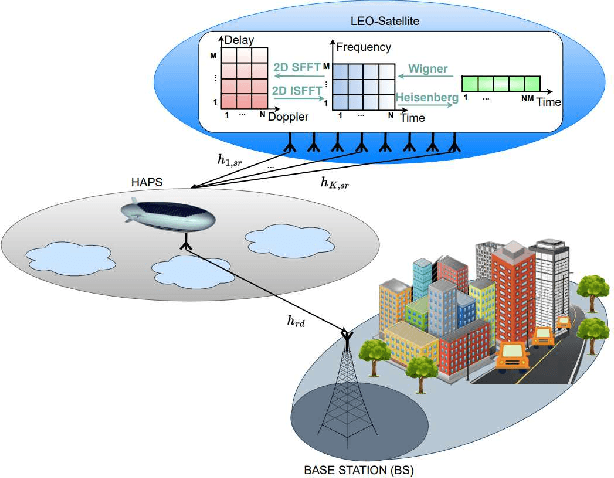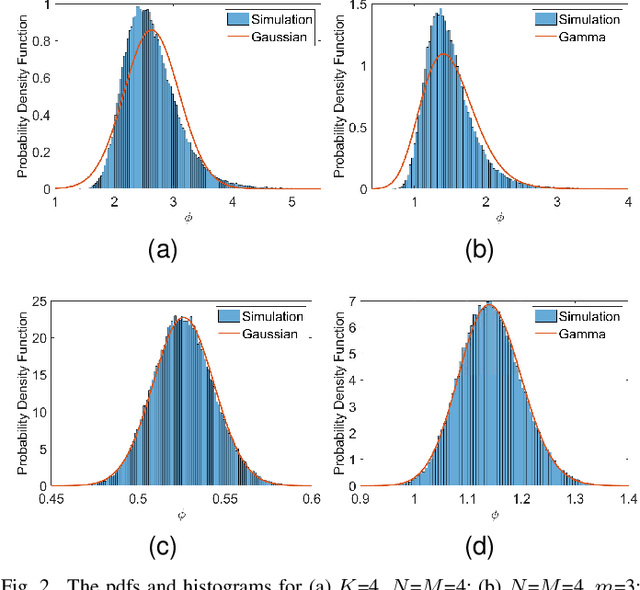Semiha Tedik Basaran
On Outage Analysis of OTFS Based LEO-Satellite Systems With HAPS Relaying
Feb 27, 2025


Abstract:This paper presents an Orthogonal Time Frequency Space (OTFS) waveform application along with a high altitude platform station (HAPS) relaying for remedying severe Doppler effects in non-terrestrial networks (NTNs). Taking practical challenges into consideration, HAPS is exploited as a decode and forward relay node to mitigate the high path loss between a satellite and a base station (BS). In addition, a maximum ratio transmission scheme with multiple antennas at the LEO-satellite is utilized to maximize Signal-to-Noise Ratio (SNR). A shadowed Rician fading model is employed for the channel realization between the LEO-satellite and the HAPS while Nakagami-m is used between the HAPS and the BS. We derive the closed-form expression of the outage probability (OP) for the end-to-end system. The theoretical and simulation results demonstrate that the OP can significantly decrease when the OTFS order and the number of transmit antennas increase.
An Experimental Study of NOMA for Connected Autonomous Vehicles
Apr 03, 2023Abstract:Connected autonomous vehicles (CAV) constitute an important application of future-oriented traffic management .A vehicular system dominated by fully autonomous vehicles requires a robust and efficient vehicle-to-everything (V2X) infrastructure that will provide sturdy connection of vehicles in both short and long distances for a large number of devices, requiring high spectral efficiency (SE). Power domain non-orthogonal multiple access (PD-NOMA) technique has the potential to provide the required high SE levels. In this paper, a vehicular PD-NOMA testbed is implemented using software defined radio (SDR) nodes. The main concerns and their corresponding solutions arising from the implementation are highlighted. The bit error rates(BER) of vehicles with different channel conditions are measured for mobile and stationary cases. The extent of the estimation errors on the success rate beyond the idealized theoretical analysis view is investigated and the approaches to alleviate these errors are discussed. Finally, our perspective on possible PD-NOMA based CAV deployment scenarios is presented in terms of performance constraints and expectancy along with the overlooked open issues.
 Add to Chrome
Add to Chrome Add to Firefox
Add to Firefox Add to Edge
Add to Edge